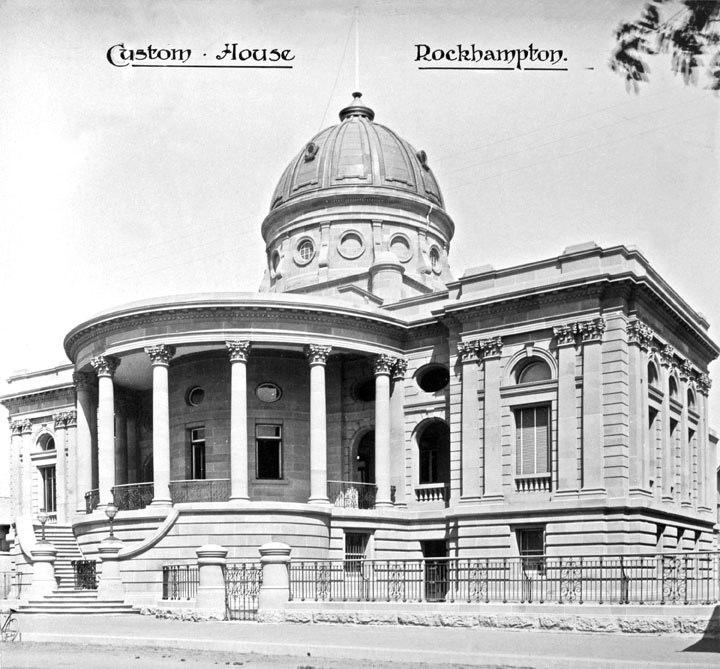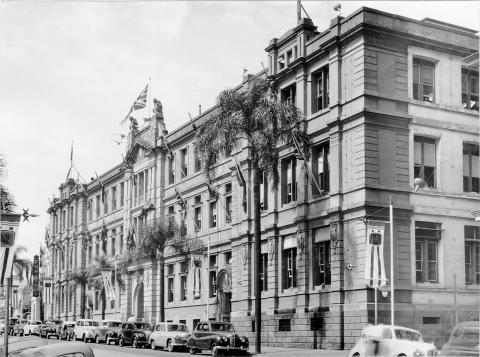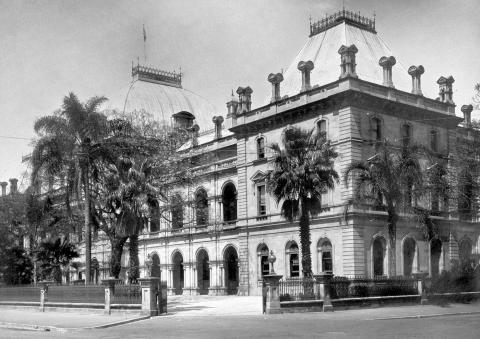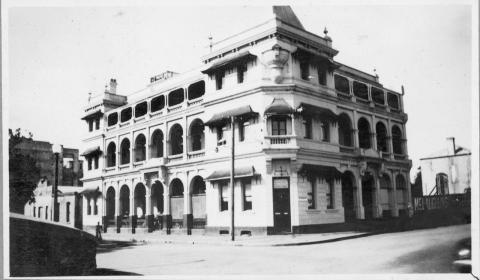
- News of the day
-
Brisbane Courier, Saturday 13 February 1897, page 6
The Rockhampton customs seizures.
There are very few additional particulars available (says the " Rockhampton Record" of Tuesday) regarding the seizure by the Customs authorities of quantities of merchandise from the premises of Syrian softgoods merchants in Rockhampton. There can be no doubt, however, that the authorities were acting under a plan of operations which has been carefully mapped out for some time past. The value of the alleged under-paid goods is very considerable, and seizures were effected in all the Syrian places of business with one exception. Invoices taken possession of were in cases for as much as £150. The operations of many of the firms have been extensive, being confined not alone to the city, but extending to the outlying districts and the West. Nearly all day yesterday vans were employed by the Customs authorities in removing the goods from the shops to the Queen's warehouse, adjoining the Custom House, in Quay Street, the transfers being watched with interest and amusement by a crowd of spectators. The seizures were not confined to the business places alone, for in one private dwelling occupied by Syrians in Lower Denison Street a valuable haul was made. In all probability additions will be made during the day to the already considerable collection of goods, and the Customs authorities and those who are assisting them will have their hands full for some days in going through the invoices, and making a comparison of the duty received with what should have been lawfully paid.
The following extract from last Saturday's " Townsville Star" shows that similar action is being taken there: the Customs authorities of Townsville have instituted an investigation into the respective stocks and documents in the shops of Messrs. Moses Bros., Messrs. Michael Bros., and another, and have taken charge of the premises. There is reason to believe that some of the goods have been under-valued for the purpose of evading duty.
- Background
-
The Rockhampton Customs House was constructed in 1899 as the third Customs House in Rockhampton. It is one of a group of Customs Houses built in Queensland at the turn of the century to the design of innovative and skilful architects of the Public Works Department. The architect responsible for the design of the Rockhampton Customs House is thought to be Thomas Pye with the assistance of George Payne.
By the 1880s, the differential settlement of the soil around the foundations of the buildings on the Customs House site led to major structural problems. Repair work was undertaken at the recommendation of the Queensland Colonial Architect. However, this work failed to rectify the problem and it was necessary to attempt repairs a number of times during the 1880s and 1890s. Deputations were made from the Rockhampton Chamber of Commerce and Rockhampton Municipal Council in 1890 seeking replacement of the building. Because the growth and prosperity of Rockhampton as a new capital city was crucial to the separation of Central Queensland movement, who sought to create a new state in north Queensland, it was thought that new public buildings constructed in Rockhampton should be equal in prominence and design to those constructed in Brisbane, the capital of Queensland. In 1889 a large new Customs House was constructed in Brisbane and therefore the new Customs Houses throughout Queensland, and particularly those planned for Rockhampton and Townsville, would reflect the high standard of this building and the prominence of the northern cities.
At the time that funding was being sought for the construction of a new Customs House in Rockhampton the economic situation in Queensland was worsening with the depression of the 1890s. The Queensland Colonial Architect, Alfred Barton Brady, estimated some £6000 was required to finance a massive repair program to reconstruct the Rockhampton Customs House, money that was unavailable. Temporary premises were sought for Customs staff for three years until repairs could be made. Brady was aware of the need for a new building but was also aware of the reduced spending of the Colonial Government to cover new projects as a result of the depression. Despite more alterations and repairs, major structural problems had reappeared by 1897. With accommodation in the Customs House untenable by this stage, tenders were called for the refitting of the Queen's Warehouse as a temporary Customs House.
Courtesy of the Queensland Heritage Register
/150.5148089,-23.3779675,7/450x450@2x.png?access_token=pk.eyJ1IjoicXNhLWRpc2NvLXFsZCIsImEiOiJjamJmdTgyZXEyeWNjMnlxZm8xcmtieHgxIn0.lmT9J5tTPKGuuccQgCVSAg)



